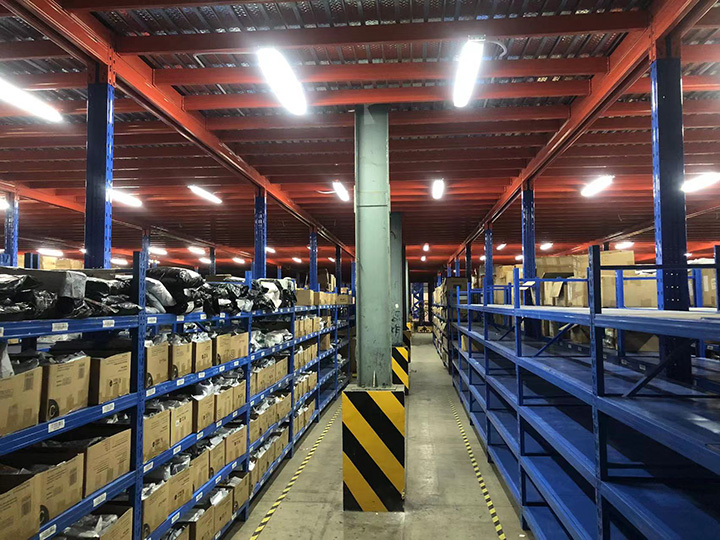In the world of industrial storage and logistics, efficiency, safety, and space utilization are paramount. Among the various solutions available, one stands out for its robustness and versatility: the warehouse pipe rack system. But what exactly is it, and why is it a cornerstone of so many successful warehouse operations? If you're considering upgrading your storage infrastructure, understanding this system is crucial. This article dives deep into five essential aspects of the warehouse pipe rack system to help you make an informed decision.

At its core, a warehouse pipe rack system is a specialized storage structure designed to organize, support, and store long, bulky, or heavy items. Unlike conventional shelving meant for boxed goods, this system is engineered to handle materials like steel bars, aluminum extrusions, plastic tubes, lumber, and even large-diameter hoses.
The fundamental working principle revolves around horizontal arms or beams that extend from vertical frames. These arms create multiple levels of support, allowing items to be laid across them horizontally. This design provides several key benefits:
Accessibility: Items can be loaded and unloaded from the side using forklifts or overhead cranes.
Visibility: Stored materials are easily visible, simplifying inventory management and stock counting.
Organization: It segregates different types, sizes, and grades of materials, preventing tangling, damage, and confusion.
Essentially, a warehouse pipe rack system transforms vertical space into a highly organized, heavy-duty storage grid, perfectly suited for the unique challenges of storing lengthy items.
A typical warehouse pipe rack system is not a monolithic structure but an assembly of key components, each playing a vital role in its strength and functionality.
Upright Frames: These are the vertical columns that form the backbone of the system. They are typically made from heavy-gauge steel and are designed to bear the entire load. They often feature punched holes or slots for easy adjustment of the arms.
Arms or Beams: These horizontal components are what directly support the stored materials. They slide into or bolt onto the upright frames. Arms can come in various lengths and load capacities, and they may have a slight upward curve to prevent items from rolling off.
Bracing and Connectors: Diagonal and horizontal braces connect the upright frames, providing critical lateral stability and preventing the rack from swaying or collapsing under load or impact. Connectors secure the arms firmly to the frames.
Base Plates: Located at the bottom of each upright frame, base plates increase the footprint of the column, enhancing stability. They are often anchored to the concrete floor for maximum safety.
The structural design is highly customizable, with considerations for height, bay depth, arm length, and load capacity per level, ensuring the warehouse pipe rack system is tailored to specific operational needs.

Investing in a well-designed warehouse pipe rack system yields significant returns across multiple facets of your operation.
Maximized Space Utilization: By storing long items vertically, you free up valuable floor space that would otherwise be consumed by disorganized piles. This allows for wider aisles, safer movement, and the potential for additional storage or workstations.
Enhanced Safety: Storing pipes or bars on the floor creates major trip and puncture hazards. A warehouse pipe rack system secures these items overhead, drastically reducing workplace accidents. Properly anchored racks also minimize the risk of collapse.
Improved Inventory Management and Organization: With a dedicated spot for each type and size of material, inventory counts become faster and more accurate. It eliminates the need to dig through piles, saving time and reducing labor costs.
Reduced Material Damage: When materials are stored flat on arms, they are prevented from bending, warping, or getting scratched. This preservation of material integrity saves money on waste and rejected goods.
Increased Operational Efficiency: The logical layout of a warehouse pipe rack system streamlines the picking and storing process. Forklift operators can access materials directly, reducing handling time and improving overall workflow.
Not all storage challenges are the same, and neither are pipe rack systems. The most common configurations include:
Selective Pipe Racks: This is the most common type, offering direct access to every stored pallet or load. It's highly versatile and ideal for warehouses with a wide variety of materials that need frequent access.
Cantilever Rack Systems: A specialized and highly popular form of warehouse pipe rack system. Cantilever racks feature arms that extend from a single vertical column, creating a completely open storage bay without front-column obstructions. This is perfect for extremely long, awkward, or bulky items like timber, sheet metal, and plastic panels.
Drive-In/Drive-Through Racks: While less common for single items, these are used for high-density storage of uniform pipe or tube bundles, where access is required on a last-in, first-out (LIFO) or first-in, first-out (FIFO) basis.
The choice between these types depends entirely on your inventory profile, turnover rate, and the physical characteristics of the materials you need to store.
Implementing a warehouse pipe rack system is a significant project that requires careful planning.
Installation Considerations:
Load Capacity: Accurately calculate the total weight and distribution of your materials. Every component, from the arms to the uprights, must be rated for the intended load.
Floor Condition and Anchoring: The concrete floor must have sufficient compressive strength to support the loaded rack. Professional anchoring is non-negotiable for stability and safety.
Seismic and Environmental Factors: In regions prone to earthquakes, specific bracing and design codes must be followed. The presence of corrosive chemicals may necessitate coatings or stainless-steel components.
Professional Installation: Due to the safety risks involved, installation should always be handled by trained professionals who understand the engineering principles and can ensure the structure is plumb, square, and securely anchored.
Maintenance Best Practices:
Regular Inspections: Conduct weekly or monthly visual inspections for any signs of damage, such as bent arms, cracked welds, or loose anchors.
Immediate Repairs: Never ignore damage. A single bent component can compromise the entire structure's integrity. Replace damaged parts immediately.
Avoid Overloading: Strictly enforce the designated load capacities for each level and the system as a whole. Overloading is a primary cause of rack failure.
Keep Clear of Obstructions: Ensure that aisles are clear and that forklift operators are trained to avoid impacting the rack uprights.
Q1: What is the typical weight capacity of a warehouse pipe rack system?
A1: The weight capacity varies dramatically based on the design, materials, and components used. Light-duty systems may hold a few hundred pounds per arm, while heavy-duty industrial cantilever racks can support several thousand pounds per arm. It is essential to work with a qualified engineer or supplier to determine the exact capacity needed for your specific loads.
Q2: Can a pipe rack system be reconfigured or expanded later?
A2: Yes, one of the major advantages of a bolted warehouse pipe rack system is its modularity. Arms can often be relocated to different heights on the upright frames, and additional bays can be added to extend the length of the system, provided the overall structural integrity and floor plan are considered.
Q3: Are there specific safety standards for these storage systems?
A3: Absolutely. In North America, the Rack Manufacturers Institute (RMI) sets the industry standards for the design, testing, and application of storage racks. Furthermore, OSHA (Occupational Safety and Health Administration) has general regulations regarding safe storage that apply. Ensuring your system complies with RMI/ANSI MH16.1 standards is critical for a safe workplace.
Q4: How does a pipe rack system differ from standard pallet racking?
A4: Standard pallet racking is designed to store palletized goods on horizontal beams with vertical posts at the front and back. A warehouse pipe rack system, particularly cantilever racks, has arms that extend from a central spine, offering unobstructed access from the front and sides, which is necessary for storing long, non-palletized items.
Q5: What is the lead time and approximate cost for installing a new system?
A5: Lead times can range from a few weeks to several months, depending on the system's complexity and manufacturer schedules. Costs are highly variable, influenced by material (e.g., structural steel vs. roll-formed steel), size, load capacity, and any special coatings. It is best to obtain quotes from multiple reputable suppliers, factoring in both the equipment and professional installation costs.
 Wechat
Wechat
 Whatsapp
Whatsapp